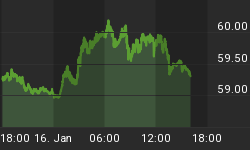Thank goodness for household borrowing and spending. Bless them, they spent $322.0 billion more, at an annual rate, than they earned in the first quarter. As shown in the chart below, this was a post-WWII record household deficit in dollar terms. If households, in the aggregate, are incurring a deficit, it implies they are making up the difference by either borrowing from other sectors, the foreign and/or domestic business sectors, or selling assets to other sectors. Of course, we know it is predominantly the foreign sector, in particular, the foreign central bank sector, that is enabling households to keep running these record deficits. But let's not cast aspersions on households for their borrowing and spending. This is exactly what the low interest rates are encouraging them to do. The Fed has held short-term interest rates below the consumer inflation rate, thus assuring households a negative inflation-adjusted return on money market accounts before taxes. After taxes, the return is even more negative. Home prices nationally rose, conservatively, by 11% last year while a one-year adjustable rate mortgage can be obtained at about 4-1/4%. Who needs hedge funds when an individual can buy an asset that is appreciating annually 675 basis points above its cost of financing. And the after-tax return is even better on this particular type of asset. No, so long as the Fed keeps interest rates low relative to inflation households will continue to borrow and spend. But watch out below when interest rates finally rise above inflation.

















